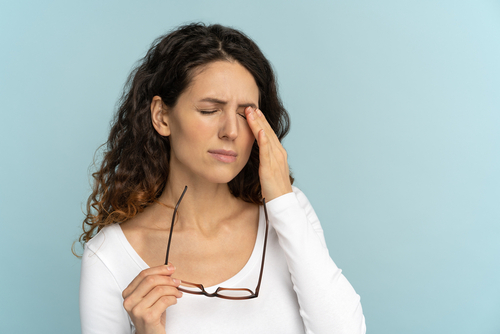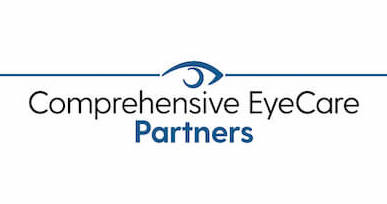
Dry eye is a common eye condition that affects the front surface of the eyes. Symptoms of dry eye can range from mild to severe and can be temporary or chronic.
If you are experiencing symptoms of dry eye, it’s important to see your eye doctor for a treatment plan to help improve the condition. Keep reading to learn more about dry eye, including how you can get rid of it!
What is Dry Eye?
Dry eye occurs when the eyes do not produce enough tears, or they produce low-quality tears. This prevents the eyes from staying adequately lubricated.
The symptoms of dry eye include:
- A dry, gritty, or burning sensation
- Redness
- Itchiness
- Excessive watering or tearing
- Eye fatigue
- Blurred vision
- Difficulty wearing contact lenses
What Causes Dry Eye?
The most common cause of dry eyes is aging. As you age, your eyes produce fewer tears and fewer high-quality tears.
While aging is the most common cause, the increased use of electronic screens for extended periods is leading to a sharp increase in dry eye diagnoses. People often forget to blink or blink less often while looking at an electronic screen for work or entertainment.
Other causes include climate-controlled indoor environments like air-conditioned offices, living in an area with arid or windy conditions, extended contact lens use, certain medications like antihistamines, meibomian gland disorders, and certain medical conditions, including diabetes and rheumatoid arthritis.
How Do You Get Rid of Dry Eye?
The best treatment for dry eye depends on the root cause. Eye doctors recommend a variety of successful treatment options, including:
Use Artificial Tears or Moisturizing Eye Drops
Often the fastest way to find relief from dry eye is by regularly using artificial tears or moisturizing eye drops. These over-the-counter treatments help keep eyes comfortable by maintaining moisture levels.
Practice Healthy Screen Habits
Taking frequent breaks while working and wearing blue-light-blocking glasses are two ways to prevent dry eyes during prolonged use of an electronic screen. Another health screen habit is the 20-20-20 rule: look at an object at least 20 feet away for at least 20 seconds every 20 minutes while in front of a screen.
Use a Humidifier
Using a humidifier when you run an air conditioner or heat your home with a wood stove can help prevent your eyes from drying out. The ideal humidity to prevent tear evaporation is between 40% and 60% RH, which can be achieved with humidifiers at home and small desktop humidifiers at work.
Limit Contact Lens Use
Because contact lenses block oxygen from the eye, they can contribute to lower tear production. Removing your contacts and wearing your glasses when you are home can allow your eyes to take in more oxygen and promote healthy tear production.
Talk to Your Eye Doctor About Advanced Treatments
If your dry eye is caused by blepharitis or meibomian gland dysfunction, your eye doctor may recommend a treatment called BlephEx. Blepharitis is caused by a buildup of bacteria on or under the eyelids, causing clogging and irritation of the eyelid’s oil glands.
BlephEx cleans out bacteria and other biofilm using a medical-grade micro sponge. This quick, in-office procedure can help relieve dry eye caused by blepharitis and improve overall eyelid health!
If you are experiencing dry eye symptoms, effective treatments are available. The best way to know which treatment can help you get rid of dry eye is by consulting a knowledgeable eye care provider, like the team at Shepherd Eye Center!
Do you want relief from dry eye? Schedule an appointment at Shepherd Eye Center at one of our 5 locations in Las Vegas or Henderson, NV, today!


